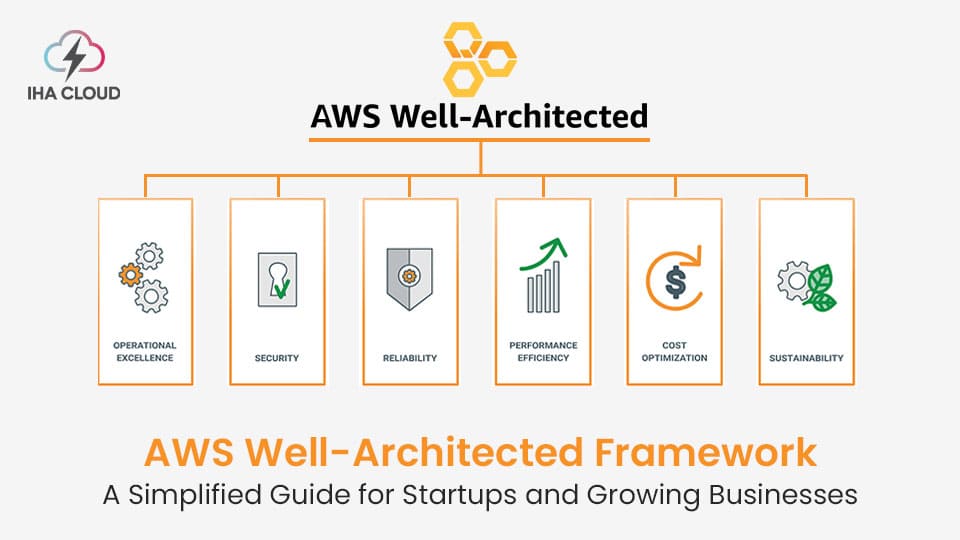AWS Well-Architected Framework: A Simplified Guide for SMB
At IHA Cloud, part of Team IHA LLP, we help organizations design secure, scalable, and cost-effective cloud solutions. One of the most powerful tools we use to guide our clients—especially startups and small businesses—is the AWS Well-Architected Framework.In this blog, we’ll break it down in a simple and technical way, so you can understand how to build better cloud systems using AWS. What is the AWS Well-Architected Framework? The AWS Well-Architected Framework is a set of best practices designed by AWS to help businesses build secure, high-performing, resilient, and efficient cloud infrastructures. Think of it as a checklist or blueprint for designing and maintaining systems in the cloud the right way. It focuses on six pillars, each addressing a crucial area of your architecture. The 6 Pillars of the AWS Well-Architected Framework 1. Operational Excellence This pillar is about how you run and monitor your systems. Key Concepts: Automate deployments using CI/CD. Monitor logs and metrics with services like Amazon CloudWatch. Use runbooks and playbooks to handle incidents. Startup Tip: Automate repetitive tasks early on—it saves time and avoids errors. 2. Security Keep your systems and data safe. This pillar focuses on protecting confidentiality, integrity, and availability. Key Concepts: Use IAM to enforce least privilege access. Enable MFA for all users. Encrypt data at rest (using KMS) and in transit (TLS). Regularly patch EC2 instances or use managed services. Startup Tip: Security should be built-in, not added later. 3. Reliability Make sure your system can recover from failures and scale as needed. Key Concepts: Use Auto Scaling Groups for EC2 instances. Set up Route 53 with health checks for failover. Store data in multiple Availability Zones. Startup Tip: Design your app to handle failure—because it will happen. 4. Performance Efficiency Use computing resources efficiently to meet your requirements as demand changes. Key Concepts: Right-size your instances. Use Amazon CloudFront for content delivery. Leverage serverless solutions like AWS Lambda to scale automatically. Use RDS Read Replicas to reduce database load. Startup Tip: Don’t over-provision—use what you need and scale smartly. 5. Cost Optimization Avoid unnecessary costs and make the most of your cloud spend. Key Concepts: Use AWS Cost Explorer and Budgets to track expenses. Reserve capacity for predictable workloads (e.g., Reserved Instances). Use S3 Lifecycle Policies to move infrequently accessed data to cheaper storage tiers. Turn off unused resources (EC2, RDS, etc.). Startup Tip: Always monitor and optimize—cloud costs can sneak up on you fast. 6. Sustainability Minimize environmental impacts by optimizing workloads for energy efficiency. Key Concepts: Use managed services (like Lambda or Fargate) instead of always-on compute. Select regions with lower carbon footprints. Optimize data storage and usage. Startup Tip: Sustainable practices often reduce cost too—win-win! How IHA Cloud Helps At IHA Cloud, we regularly perform Well-Architected Reviews for startups and growing companies. These reviews help identify areas for improvement across the six pillars. We provide: A detailed report highlighting risks and recommendations. A prioritized roadmap to fix high-risk issues. Hands-on implementation support. Our goal is to make sure your AWS architecture is not only functional but also secure, efficient, and future-ready.
AWS Well-Architected Framework: A Simplified Guide for SMB Read More »

